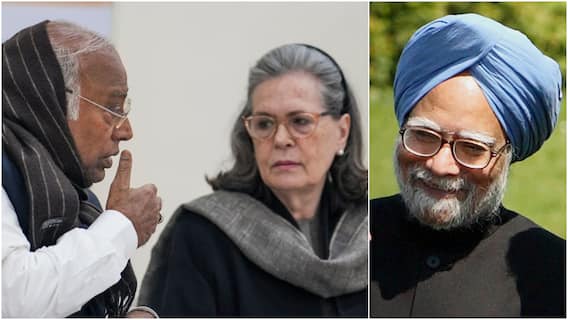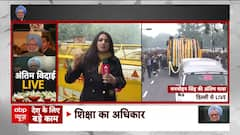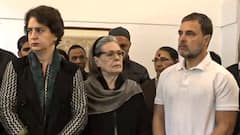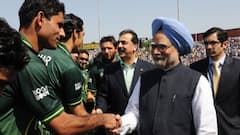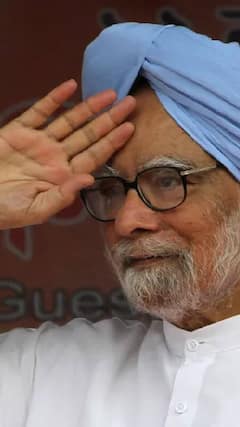Explorer
Advertisement
Indian Economy Embarks On A New Journey This Independence Day
Aatmanirbhar Bharat which came as a shot in the arm to make India self-reliant and several other structural reforms announced will take time before it starts bearing fruits in the post pandemic era.

PIC/AFP
New Delhi: As the Independence Day celebration is expected to remain subdued this time due to coronavirus pandemic leaving the economies globally shattered, India is in the middle of looming crises with economic growth and employment emerging as the two major trouble spots. Also Read: Independence Day 2020: 10 Little Known Facts About India's National Anthem
The biggest historic pandemic that the country is grappling with has raised serious doubts over the economic recovery and its future. If you go by the International Monetary Fund estimate then the nation’s gross domestic product (GDP) will shrink 4.5 per cent this year. Most GDP estimates for India in 2020 paint a bleak picture of the economy. The World Bank projects 3.2 per cent contraction, while the International Monetary Fund puts it at 4.5 per cent and the Asian Development Bank estimates the growth at 4 per cent.
Even the Reserve Bank of India Governor Shaktikanta Das projects GDP growth rate to remain in the negative zone in 2020-21. The scenario clearly portrays the bleak affairs of business establishments, shops, factories reporting losses since the outbreak.
Notably, many economic regions are still awaiting labourers to come back but they lack resources or confidence to return back. Most regions including Bihar and Uttar Pradesh which are a hub of labourers are affected by floodwater. With a view to tackling the economic crises Prime Minister Modi has been announcing key measures since the coronavirus outbreak.
What are some of the big-ticket reforms announced?
The Rs 20-lakh-crore Atmanirbhar package, a credit guarantee scheme for MSMEs besides key reforms for the farm sector, among other crucial steps. The mammoth package is aimed to kickstart Make in India 2.0. Apart from allaying near-term working capital and loan financing concerns during an unprecedented health crisis, the package lays down a bold intent to re-energise, revamp and reinforce a strong industrial and manufacturing sector for India’s long-term growth in a post-Covid world.
The package has managed to spur demand in the rural areas, however, the government has to make attempts in securing jobs in urban regions by supporting businesses. It had been intended to offer immediate financing and tackle liquidity problems that firms, businesses and utilities have faced. Most importantly, the plan lays down reforms that could push the manufacturing movement for India in the longer term.
In an attempt to encourage domestic production, the government has raised tariffs on many products and stipulated import licensing for others making overseas goods expensive.
The Pradhan Mantri Garib Kalyan Yojana was announced soon after the nationwide lockdown was implemented at the end of March and provided free foodgrain and cash payments to women, poor senior citizens and farmers.
What is the way forward?
Experts believe the monetary tactics are not encouraging enough even as the RBI has slashed the repo rate by 115 bps, liquidity injections and fresh regulations.
However, the government has hinted at the “early green shoots of economic revival” in May and June by stating higher electricity and fuel consumption, increased movement of goods and rise in financial transactions. The finance ministry has listed 14 indicators of economic recovery and expects a boost from agriculture, given the expectations of timely rain.
The Prime Minister’s Aatmanirbhar Bharat also came as a shot in the arm to make India self-reliant but not inward-focused.
The Uttar Pradesh government has approved an Ordinance exempting businesses from the purview of almost all the labour laws for the next three years, to give a fillip to investment in the state, affected by Covid-19. If more states follow, this can change the way businesses function.
Modi’s attempt to script a new chapter through structural reforms aiming to recharge the economy seems to start bearing fruits only in the long term. Until then, it’s going to be a wait and watch!
Follow Breaking News on ABP Live for more latest stories and trending topics. Watch breaking news and top headlines online on ABP News LIVE TV
View More
Advertisement
Trending News
Advertisement
Advertisement
Top Headlines
Cities
India
India
India
Advertisement


Saswat PanigrahiSaswat Panigrahi is a multimedia journalist
Opinion





